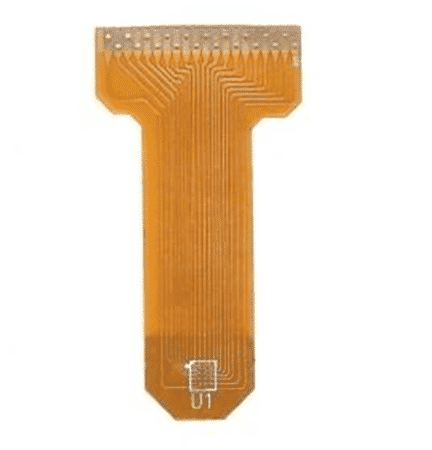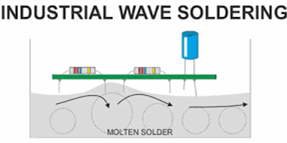As we may know, the production method of a FPC board mostly likely is similar to that of the standard rigid PCB board. And in some production stage, the PCB laminate demands different equipment or different treatment.
Most of the PFC PCBs use a negative method. However, you may found that some difficulties will occur during machining and coaxial treatment during the laminates. And the major issue is handling process of substrates. Flexible boards substrates are nets of different widths, therefore, the transfer of flexible laminates demands the rigid bracket during etching processing.

What should pay attention to is, during the production of flexible board, the handling and cleaning of PFC PCBs is much more critical than the handling of a rigid standard PCB boards. If it is not proper clean or obey of the correct processing, it may result in failures in subsequent production processing due to the sensitivity of the substrates used in the PFC PCB boards.
And it plays an very important role in the production procedure of FPC board,. The material wil be affected by some pressure such as baking wax, lamination processing or copper plating. The copper foil is also fragile to knocking and dents, and the a roper extension will make sure a max flexibility of PCB. A Mechanical destroy or work harden to the copper foil will also affect or even reduce the flexibility life of the flex circuit boards.
A typical flexible single-sided circuit is cleaned at least three times during manufacturing, however, multiple substrates require cleaning for 3-6 times due to its complexity. In contrast, rigid multilayer printed circuit boards may require the same number of cleaning cycles, but the cleaning procedure is different, and care must be taken when cleaning flexible materials. Even under the extremely light pressure during the cleaning process, the dimensional stability of the flexible material is affected and the panel is elongated in the z or y direction depending on the bias of the pressure.
Chemical cleaning of flexible printed circuit boards should be environmentally friendly. The cleaning process includes alkaline dye bath, thorough rinsing, micro-etching and final cleaning. Damage to the film material often occurs during the shelf life of the panel, when the tank is agitated, when the shelf is removed from the pool or when there is no shelf, and the surface tension is destroyed in the clear pool.

The holes in the flexible board are generally punched, which leads to an increase in processing cost. Drilling is also possible, but this requires special adjustment of the drilling parameters to obtain an unstained hole wall. After drilling, the borehole dirt is removed in a water cleaner with ultrasonic agitation.
Mass production of flexible boards has proven to be less expensive than rigid printed circuit boards. This is because flexible laminates enable manufacturers to produce circuits on a continuous basis, starting with laminate rolls and directly producing finished boards.
To produce a printed circuit board and etch a continuous process schematic of the flexible printed circuit board, all production processes are performed in a series of sequentially placed machines. Screen printing may not be part of this continuous transfer process, which creates an interruption in the online process.

In general, soldering in flexible printed circuits is more important due to the limited heat resistance of the substrate. Manual soldering requires sufficient experience, so if possible, wave soldering should be used.

When soldering flexible printed circuits, you should pay attention to the following:
1. Because polyimide is hygroscopic, the circuit must be baked before soldering (for 1 h at 250 °F).
2. The pad is placed over a large conductor area, such as a ground plane, power plane, or heat sink. The heat sink area should be reduced, as shown in Figure 12-16. This limits heat dissipation and makes soldering easier.
3. When soldering the pins in a dense place, try not to continuously solder adjacent pins and move the solder back and forth to avoid local overheating.
Information on flexible printed circuit design and processing can be obtained from several sources, however the best source of information is always the producer / supplier of processed materials and chemicals. Through the information provided by the supplier and the scientific experience of the processing experts, high-quality flexible printed circuit boards can be produced.

 My Message
My Message
 Suggestions
Suggestions











